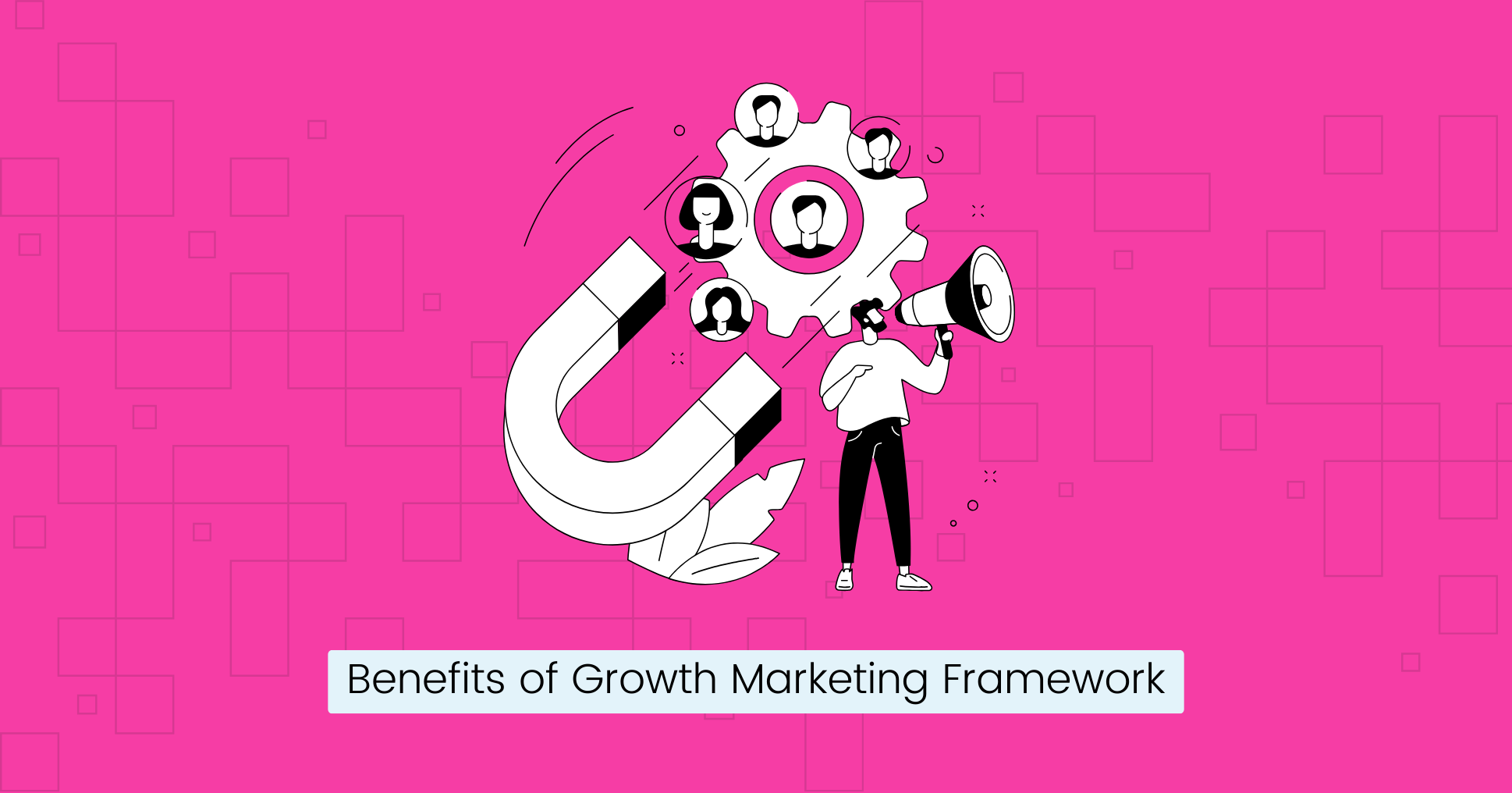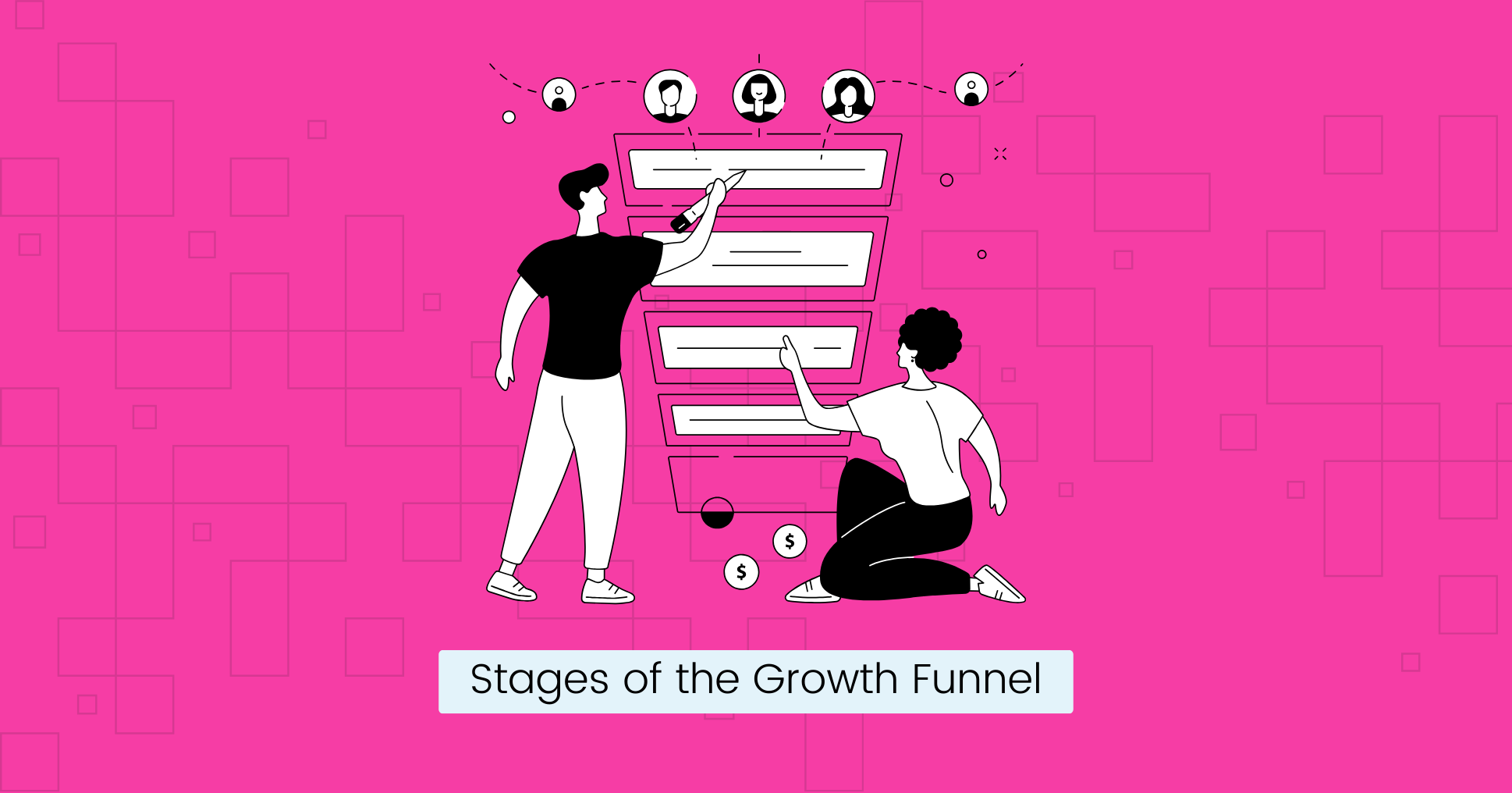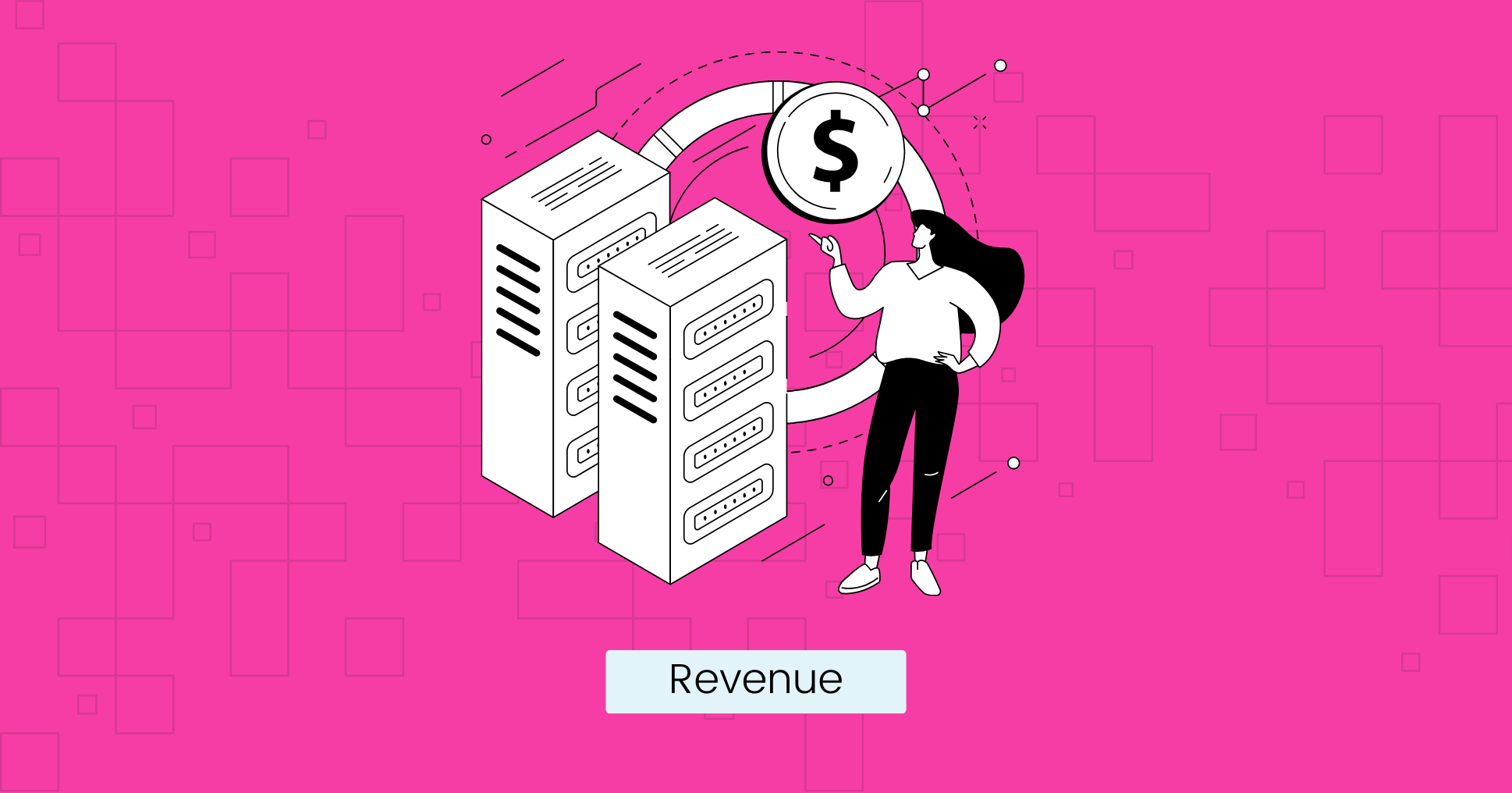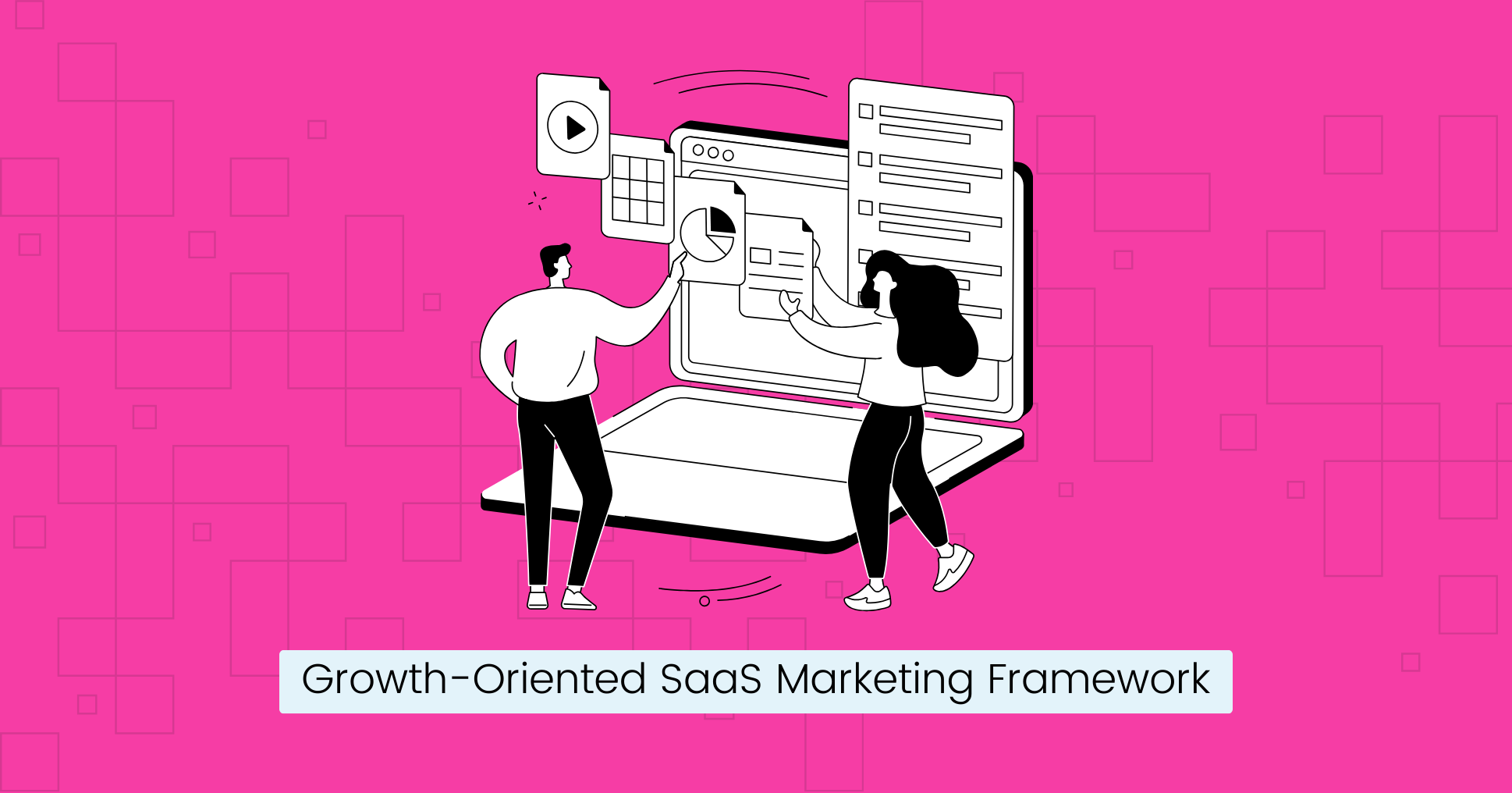Table of Contents
Build a SaaS Growth Marketing Framework (2024)
Standing out without a clear marketing strategy is difficult in the SaaS industry.
A successful SaaS business needs a growth marketing framework with a clear roadmap for marketing efforts.
In this article, you’ll learn how to develop a growth marketing framework with data-driven insights to reach your business goals and create growth opportunities.
Here’s what you will learn:
- What is growth marketing?
- Benefits of implementing a growth marketing framework.
- Five stages of growth marketing funnel: the AARRR framework.
- How to create a growth-oriented SaaS marketing framework.
Let’s get started.
What is Growth Marketing?
Growth marketing is a data-driven approach to sustainable business growth. It tracks and improves strategies using data analytics, marketing metrics, and customer insights.
Unlike traditional marketing, which focuses on short-term tactics to generate leads, growth marketing prioritizes long-term growth by continuously testing and scaling successful strategies for sustainable growth.
Growth marketers focus on these basic principles:
- Customer-centric approach to building long-term relationships.
- Strategic view of the entire customer journey to maximize customer lifetime value (Also called the full-funnel approach).
- Continuous experimentation and iteration on SaaS marketing strategies and tactics for better results over time.
Benefits of Implementing a Growth Marketing Framework

A growth marketing framework is a step-by-step guide to adopt best practices for strategic growth.
It is like a blueprint to overcome marketing challenges.
By implementing a growth marketing framework, you can get the following benefits:
- Make informed decisions and optimize strategies.
- Allocate resources more effectively.
- Higher customer satisfaction and retention.
- Increase return on investment (ROI).
- Scalable growth based on data-oriented results.
Tip: If you are a startup looking for the best growth marketing approach to achieve your business goals, check out our growth mentoring for B2B SaaS companies.
5 Stages of the Growth Funnel: the AARRR Framework

The AARRR framework, also known as the Pirate Funnel, is one of the most popular growth strategy frameworks used in marketing to describe the various stages of the customer lifecycle.
The AARRR framework split the funnel in 5 steps:
Acquisition
This stage involves attracting new customers to your product or service by engaging them with your content.
Defining your buyer personas can help you acquire new leads. It will help you determine your target audience and what measures you should take to attract them.
You can do this by focusing on SaaS marketing essentials such as creating an ideal customer profile (ICP) and brand marketing to attract customers.
Customer acquisition involves engagement channels such as:
- Advertising
- Content marketing
- Email marketing
- Social media platforms
- Search engine optimization (SEO)
- Search engine marketing (SEM)
- Sponsorships and referrals
- Listing websites like G2 and Product Hunt.
Activation
After acquiring customers, it’s important to establish a connection between them and your SaaS product.
The activation stage involves getting them to take an initial action that shows their interest or engagement with your product or service.
You need to motivate users to take the desired action by highlighting the benefits and advantages of using your product.
You can onboard customers by providing valuable experience with tasks such as:
- Customer feedback.
- Sign up for an account.
- Completing a profile.
- Using a key feature.
You can optimize activation rates by experimenting with different onboarding flows, messages, and calls to action.
Pro tip: Clarity is a useful free analytics tool for gathering insight about activation. The heatmap and user recording can help you iterate on your UI to improve activation.
Retention
After engaging users, the next step is to keep them engaged and returning to your product or service for a long time.
The goal is to create a growth strategy to provide customer satisfaction, help retain customers, and reduce the churn rate.
Your growth marketing process for retention may include the following:
- Providing high-quality content.
- Offering interactive features or rewards.
- Personalized email campaigns.
- Excellent customer support.
You must identify why customers churn and take proactive steps to prevent it.
Such as:
- Win-back campaigns to reactivate customers.
- Improved product features based on customer feedback.
- Providing incentives for customers to stay.
Revenue

In the revenue stage, users convert into paying customers or generate revenue for your business.
It could involve:
- Purchasing a product or service.
- Subscribing to a membership.
- Upgrading to a premium version.
The goal is to increase the lifetime value of customers through expansion strategies such as:
- Upselling and cross-selling.
- Add-ons or upgrades.
- Discounts.
To increase conversion rates and drive revenue growth, you need to emphasize the value users will receive in exchange for their payment.
Key revenue metrics to monitor may include:
- Annual recurring revenue (ARR).
- Monthly recurring revenue (MRR).
- Average revenue per user (ARPU).
- Customer lifetime value (CLV).
By analyzing these metrics, you can gain valuable insights into customer behavior and improve your growth strategies.
Pro tip: Do not be afraid to A/B test and experiment with your pricing. Many founders are afraid to change their pricing, but it is the most effective way to improve your monetization.
Referral
The referral stage is the last phase of the pirate funnel, where satisfied customers refer others to your product or service to fuel organic growth.
It involves referral channels such as:
- Referral programs like rewards, discounts, or incentives.
- Reviews and testimonials.
- Social media and emails.
- In-app surveys.
To encourage customers to refer others, you can provide shareable referral links, social sharing buttons, and referral tracking tools.
Pro tip: G2 and Capterra review websites are typically great SaaS acquisition channels. The number of reviews on those websites drives the website’s popularity, so it is good to encourage your happy customers to leave you a review.
Create a Growth-Oriented SaaS Marketing Framework

Now that you know the stages of growth marketing, it’s time to create your framework to optimize your growth strategies.
Identify Your Target Audience and Niche
The first step in creating a successful growth marketing framework is to define your target audience and find a niche that aligns with your business goals.
It involves gaining a deeper understanding of the behaviors, preferences, and pain points of your audience using factors such as:
- Firmographics include company size, revenue and industry.
- Demographics include age, gender, location, education, income, and occupation.
- Psychographic traits refer to a person’s attitudes, values, interests, hobbies, and lifestyle.
- Market research, such as industry reports, surveys, competitor analysis, and current trends
Your goal is to get a clear idea of what drives your customers so you can develop more personalized and targeted marketing campaigns to increase conversion.
- What are their specific needs or pain points that you can address?
- What features or benefits are they looking for?
- What are their purchasing habits and brand preferences?
Analyzing these factors allows you to create a growth framework that effectively resonates with your audience.
Develop and Implement your Growth Marketing Strategy
Once you have a target audience, you can start mapping out their customer journey and identify their various touchpoints with your product.
You can form ideas on achieving your business goals and what marketing tactics you can implement at the different stages of the growth funnel to acquire and retain customers.
Your marketing team should focus on increasing the average order value and customer lifetime value to increase revenue growth.
Conduct Growth Experiments
The next step is to test your growth strategies to determine what works best for your overall business goals.
Conduct marketing experiments to test hypotheses and optimize your strategies.
You can make a hypothesis based on customer research and industry trends.
For example, you can hypothesize that a free trial option will increase conversion rates or that segmenting your audience into personalized lists will improve retention.
You can also conduct A/B tests to compare different elements of your marketing campaigns, such as headlines, calls to action, and emails, to decide which works better.
Analyze Key Metrics and Iterate
Once you have tested your ideas, you can analyze the results using marketing metrics for each experiment to measure its success, such as:
- Customer acquisition cost (CAC)
- Customer lifetime value (CLV)
- Conversion rates
- Monthly activation rate
- Churn rates
- Revenue metrics
Analyze data, iterate on successful strategies, and test new ideas for further improvement.
Final Words
Growth marketing is not a trick but a continuous process of learning and iterating strategies based on data and feedback to improve your marketing efforts.
You need a growth mindset and a robust growth marketing framework to experiment with new ideas and seek opportunities for improvement.
Are you ready to start implementing your growth marketing plan? Hire a Fractional CMO and let experts help you achieve your growth goals.
FAQs
Why is it important to have a growth marketing strategy framework?
A growth marketing strategy framework provides a systematic approach to identifying opportunities, setting goals, implementing strategies, tracking progress, and optimizing campaigns for successful growth.
What are the core components of a growth marketing strategy?
The core components of a growth marketing strategy include market analysis, data-driven insights, experimentation, customer-centricity, agile execution, and continuous optimization.
What are the types of marketing approaches used in growth marketing?
Growth marketing utilizes digital marketing, growth hacking frameworks, data-driven strategies, and experiments.
